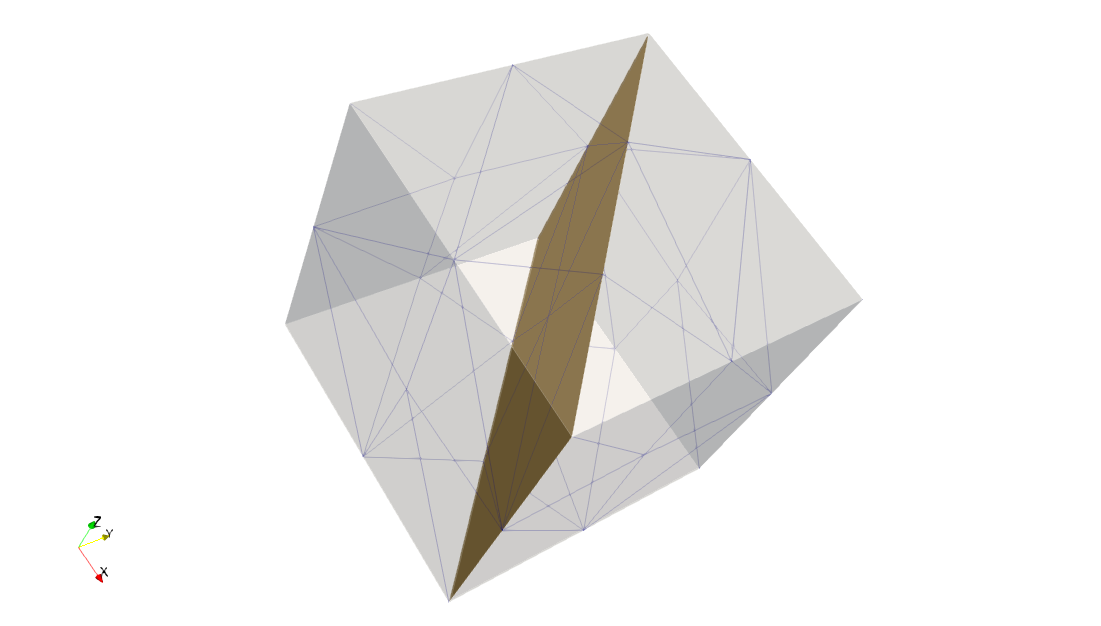1. Reference problem#
1.1. Geometry#
It is an elastic cube (or square in 2D), with a side of 1,000 mm and crossed by an oblique 45° interface. The geometry is shown in figure, with the interface in yellow and the associated coordinate system at the bottom left. The cube is positioned so that \(0\le x\le 1000\), \(0\le y\le 1000\), and \(0\le z\le 1000\).

|
Figure 1.1-a: geometry of the structure studied
1.2. Material properties#
The volume material obeys an elastic law and the interface to the CZM_ELAS_MIX law. The characteristics are shown below:
\(E=30000\text{MPa}\) |
Young’s module |
\(\nu =0.2\) |
Poisson’s ratio |
\({k}_{n}=20\text{MPa/mm}\) |
Interface stiffness in the normal direction |
\({k}_{t}=40\text{MPa/mm}\) |
Interface stiffness in the tangent direction |
Moreover, the Lagrangian coefficient of increase (PENA_LAGR_ABSO), which has no impact here because the solution is homogeneous, is fixed at \(r=600\text{MPa/mm}\).
Finally, the six possible combinations of adhesion are examined: normal elastic, unilateral or perfect adhesion and elastic or perfect tangential adhesion.
1.3. Boundary conditions and loads#
The cube is subject to a \(\sigma ={\sigma }_{0}\text{}{e}_{x}\otimes {e}_{x}\) constraint. More specifically:
Side \(x=0\) is stuck in \({u}_{x}=0\)
Side \(y=0\) is stuck in \({u}_{y}=0\)
Side \(z=0\) is stuck in \({u}_{z}=0\)
Face \(x=1000\text{mm}\) is subject to surface force \(T={\sigma }_{0}{e}_{x}\)
These conditions also make it possible to block rigid body movements. The intensity of the stress \({\sigma }_{0}\) takes the values +2 MPa and -2 MPa successively.
1.4. Initial conditions#
Since this is an elastic problem, there is no need for initial conditions.